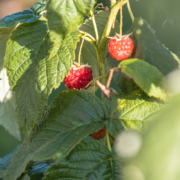Food Sovereignty Indicators for the Health of Indigenous Communities
Food security means that a community has stable and sufficient access to nutritious food. Climate change further threatens Indigenous communities from maintaining secure access to country foods. Indigenous food sovereignty is a means by which food security for Indigenous communities is achievable. Having measurable indicators for food sovereignty in Indigenous communities can go a long way in securing the long-term health of Indigenous peoples.
While food security focuses on protecting and distributing food and produce from existing food systems, food sovereignty emphasises having a democratic approach that engages all community members and food producers in building and sustaining local food systems. Food Secure Canada highlights seven pillars for food sovereignty:
- Focusing on food for people
- Building knowledge and skills
- Working with nature
- Valuing food providers
- Supporting local food systems
- Putting control into local initiatives
- Food as sacred/gift of life
Indigenous food sovereignty is action-oriented and connected to a broader social movement that considers the needs of future generations. However, determining how to gauge where progress is being made in securing the overall health of Indigenous communities through Indigenous food sovereignty is difficult to achieve. Every effort should also consider the capacity of Indigenous communities to be engaged for long-term engagement.
Indigenous food sovereignty indicators can be used to build both community food systems and improve overall community health. Through a literature review, content analysis, and Indigenous community engagement, a collective of Indigenous and non-Indigenous university researchers has identified seven Indigenous food sovereignty indicators:
- Access to resources
- Production
- Trade
- Food consumption
- Policy
- Community involvement
- Culture
An additional twenty-five sub-indicators are identified and are intended to be transferable to diverse Indigenous communities across differences of “cultural values, history, traditions, geography governance, beliefs, resources, capacity, and goals.”
One of the limitations of this research is that current public policy does not typically connect food sovereignty with public health priorities and so the implementation of these Indigenous food sovereignty indicators will require leadership to meet community expectations that link food security with sustainable health and wellness in Indigenous communities. Indigenous food sovereignty indicators can also be used to frame health promotion initiatives at the local community level by supporting Indigenous approaches to farming, harvesting, cooking, and language revitalization in conjunction with enhancing scientific work.
Indigenous food sovereignty projects worth considering in terms of their efforts to build food security and to heal from centuries of colonization include: Ginawaydaganuc Food Sovereignty Project; a project of the Pauquachin and T’Sou-ke First Nations of South Vancouver Island called Feasting for Change; and projects led by 28 different organizational efforts worldwide. Many of the projects combine seed saving, financing, guidance and mentoring by Elders, food preparation, and feeding programs.
Indigenous-led food sovereignty projects, combined with an application of indicators to gauge for impact, could offer a powerful means to manage and overcome Indigenous food insecurity, while promoting long-term Indigenous community health in the context of climate change.
By Leela Viswanathan
(Image Credit: Johnny McClung, Unsplash)


 Ahmed, Unsplash
Ahmed, Unsplash Christian Wiediger, Unsplash
Christian Wiediger, Unsplash Bart Heird (Unsplash)
Bart Heird (Unsplash)

 Bonnie Kittle (Unsplash)
Bonnie Kittle (Unsplash)

